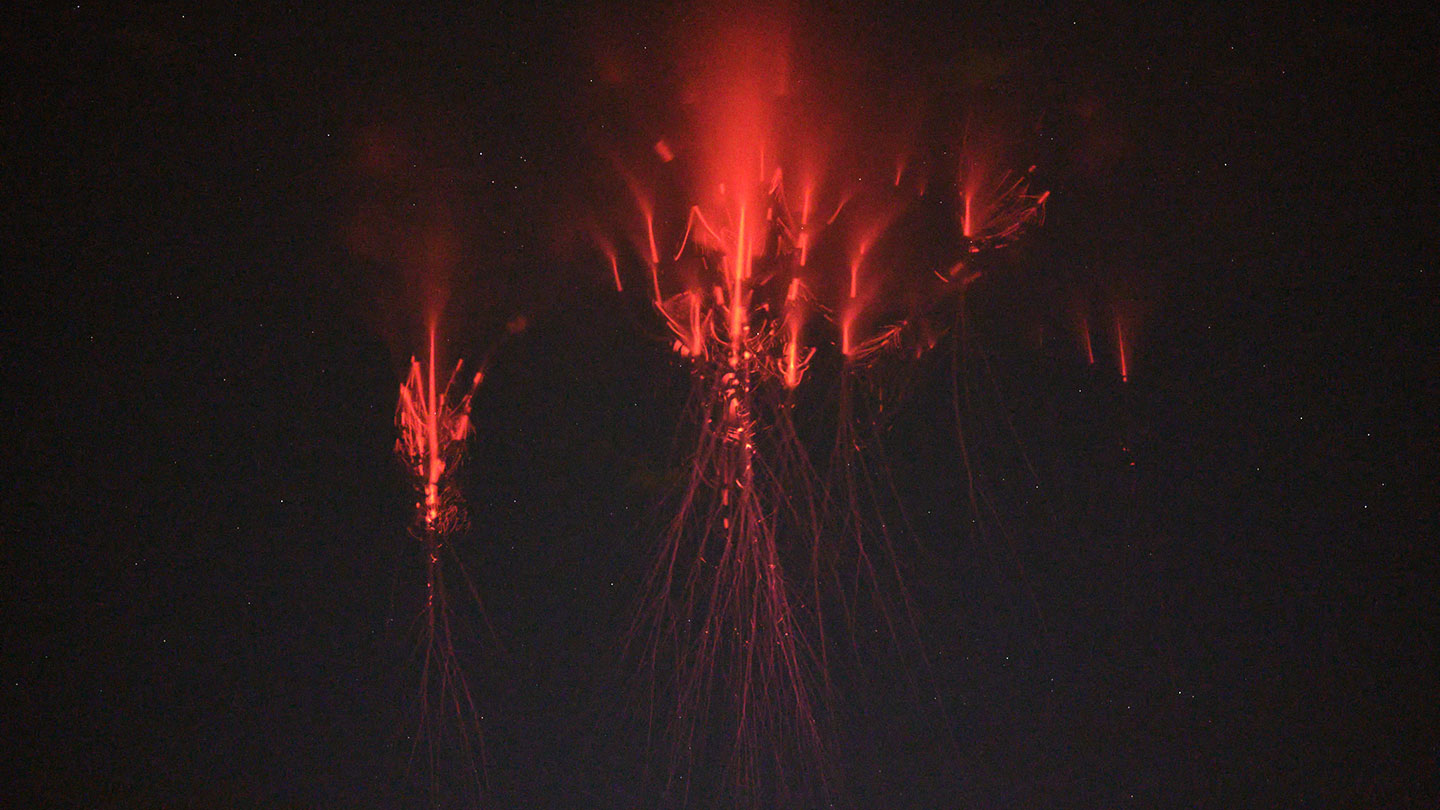Analyze This: Why do atmospheric ‘ghosts’ glow green after red sprites?
Space dust and oxygen give ghosts in the upper atmosphere their haunting hue

Sprites are red glows that sometimes follow lightning. Cameras can capture photos of them. Citizen science projects and schools even contribute to investigating these natural — not paranormal — phenomena. But green ghosts, which occur after sprites, are rarer and more difficult to see in images.
Oscar van der Velde
Spooky glows haunt the air above powerful thunderstorms. These include vibrant red lights called sprites, which are sometimes followed by eerie green ghosts. But these light shows are not paranormal. They arise naturally from the electricity of strong storms. And now, scientists have unveiled exactly what is behind ghosts’ green hue.
To create sprites and ghosts, you need a massive thunderstorm that holds a lot of electrical charge, says Oscar van der Velde. He’s a meteorologist at the Polytechnic University of Catalonia in Terrassa, Spain. Strong storms can spark intense lightning that moves a lot of electrical charge around, kicking off a process that causes molecules in the air to briefly glow red. This creates sprites, whose structures can look like jellyfish tentacles. Because clouds block views of them from below, sprites can best be seen from 100 to 200 kilometers (60 to 120 miles) away.
“If you have a good image, it looks super spectacular,” van der Velde says. After a sprite, a subtle greenish gleam — a ghost — sometimes appears near the sprite’s top.
Sprite hunters noticed such glimmers of green in videos they had taken since 2019. But it wasn’t clear whether these apparitions were glitches in the images. Van der Velde and others determined the green blurs after sprites did indeed occur in the sky. Scientists suspected that oxygen high in the atmosphere was responsible for throwing off this green light. But van der Velde’s team wanted to take a closer look.
Using a camera and an instrument that could pick out the specific wavelengths in light, the team waited for a green phantom glow to appear. One did over the Mediterranean Sea on September 21, 2019. It was difficult to capture the green gleam in the narrow slit of the instrument, van der Velde says. It can be challenging to predict exactly where a ghost will appear. But ultimately, he says, “we captured a ghost.”
The researchers plotted the wavelengths of light in the ghost’s gleam. Then, they compared the spectral features to the wavelengths of light known to be given off by specific chemical elements.
“It’s like a fingerprint,” van der Velde says. This confirmed that oxygen was involved in producing the green hue. But the team saw that other elements they didn’t expect — iron and nickel — were involved, too. These metals are likely in the air due to meteors burning up high in the atmosphere. The researchers reported their results in Nature Communications last December.
Questions remain about the mysterious specters known as ghosts. For instance, it’s not clear whether ghosts appear at certain times of the year. Perhaps not Halloween, but maybe when meteor showers have recently laced the atmosphere with space dust.
Data Dive:
- Look at Figure A. Where is the GRASSP instrument located? How far is it from the ghost (plus sign)? (See the scale bar in the bottom left corner.)
- Where was the highest density of lightning on the evening the ghost was observed? How far was that from the ghost?
- Look at the top panel of Figure B. What is the range — or spread — of wavelengths that the instrument analyzed?
- Now look at all three panels. Which elements make green light? Which elements make yellow light? Which elements make orange light?
- Which elements create the brightest peaks?









